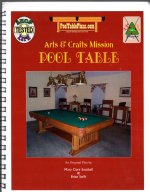My question to you is: Am I doing something wrong, or is it simply that this saw is not suitable for precision work?
People have built astounding things with very little in the tool arsenal.
To answer your specific Q, it is a combination.
I don't know the Sears model and wouldn't take the time to cross reference it if you told me: they sold some moderately good saws as well as a lot of trash. However, a competent craftsperson might still be able to eke good results out of a poor machine by understanding and accommodating it's limitations. Meaning your saw can probably do the work if you can, but by your description it will not be a fast and efficient process. You will probably need to enhance your percentages by buying a pretty good thin rim blade with appropriate tooth geometry for each task. Rip style for tip cuts, cross cut for cross cut, e.g. Then get your indicators and really precisely align the saw for every specific configuration change and task.
What i hear is that the saw can do the tasks but won't stay aligned if you are not completely, absurdly gentle with it. So you can adapt to it, enhance its weak points, & go slow. You might still have enough blunders to ruin some good expensive material.
Iusedtoberich really covered the other points.
I don't see 5K materials in a high end construction with simple detailing.
You're looking at maybe 250 bd ft of hardwood lumber. this includes almost 50% waste so you can choose out the higher grade materials for use where most appropriate. So if the mix is oak and traditional poplar structural parts maybe $500 - $800 in 8/4 FAS/SEL KD RWL Rgh lumber? I don't know your build, so it is possible you would start with 10/4 or 12/4 poplar or African mahogany for framing, rather than gluing up, which could add some cost. But the cubic amount of raw material will be similar either way. Alternately, maybe you'r choose to start with 4/4 and glue up (laminate) all the thick pieces, which starts with cheaper raw materials.
You'll need a bandsaw to resaw the lesser grade 8 - 10 - 12/4 into the thinner components, a large jointer to make all the lumber flat, and to straighten it; and a planer to surface the other side and edge parallel. A table saw is more convenient than a radial arm saw for many of the tasks but you could get by with either. The radial has some advantages for angles in larger boards, unless you get an industrial table saw. But even a Delta (p)unisaw is more rigid for ripping than most radials, even the 16" or 20" DeWalts. Another reason for the jointer is that all your glue joints require it. As Iusedtoberich notes, woodworking 101. But there is a guy on OWWM who sometimes does all those tasks with handtools for fun, and makes very high end furniture mostly in mahogany at a relatively rapid pace.
Fundamentally, much of the high end, heavy equipment in a wood shop is dedicated just to making rough material flat, straight, parallel, square, and to thickness & width. Absent that capacity, you can still do it the hard way by hand, (people do, at a very high level) or you can pay 5x material costs for pre-prepared poorer options of sub-optimal lumber in dimensions that might not be ideal for making something rigorous like a pool table.
smt
